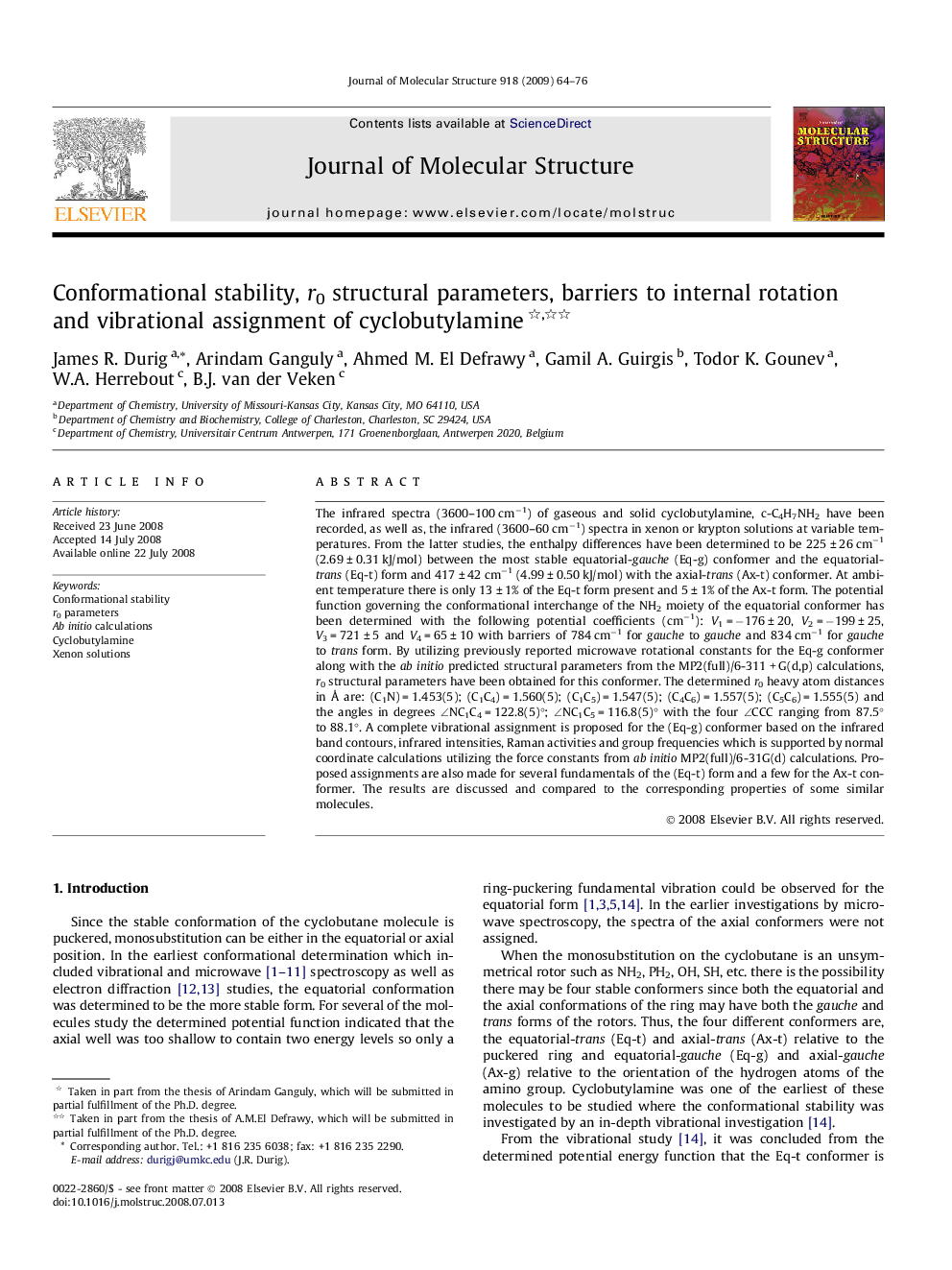| Article ID | Journal | Published Year | Pages | File Type |
|---|---|---|---|---|
| 1410517 | Journal of Molecular Structure | 2009 | 13 Pages |
Abstract
The infrared spectra (3600-100 cmâ1) of gaseous and solid cyclobutylamine, c-C4H7NH2 have been recorded, as well as, the infrared (3600-60 cmâ1) spectra in xenon or krypton solutions at variable temperatures. From the latter studies, the enthalpy differences have been determined to be 225 ± 26 cmâ1 (2.69 ± 0.31 kJ/mol) between the most stable equatorial-gauche (Eq-g) conformer and the equatorial-trans (Eq-t) form and 417 ± 42 cmâ1 (4.99 ± 0.50 kJ/mol) with the axial-trans (Ax-t) conformer. At ambient temperature there is only 13 ± 1% of the Eq-t form present and 5 ± 1% of the Ax-t form. The potential function governing the conformational interchange of the NH2 moiety of the equatorial conformer has been determined with the following potential coefficients (cmâ1): V1 = â176 ± 20, V2 = â199 ± 25, V3 = 721 ± 5 and V4 = 65 ± 10 with barriers of 784 cmâ1 for gauche to gauche and 834 cmâ1 for gauche to trans form. By utilizing previously reported microwave rotational constants for the Eq-g conformer along with the ab initio predicted structural parameters from the MP2(full)/6-311 + G(d,p) calculations, r0 structural parameters have been obtained for this conformer. The determined r0 heavy atom distances in Ã
are: (C1N) = 1.453(5); (C1C4) = 1.560(5); (C1C5) = 1.547(5); (C4C6) = 1.557(5); (C5C6) = 1.555(5) and the angles in degrees â NC1C4 = 122.8(5)°; â NC1C5 = 116.8(5)° with the four â CCC ranging from 87.5° to 88.1°. A complete vibrational assignment is proposed for the (Eq-g) conformer based on the infrared band contours, infrared intensities, Raman activities and group frequencies which is supported by normal coordinate calculations utilizing the force constants from ab initio MP2(full)/6-31G(d) calculations. Proposed assignments are also made for several fundamentals of the (Eq-t) form and a few for the Ax-t conformer. The results are discussed and compared to the corresponding properties of some similar molecules.
Related Topics
Physical Sciences and Engineering
Chemistry
Organic Chemistry
Authors
James R. Durig, Arindam Ganguly, Ahmed M. El Defrawy, Gamil A. Guirgis, Todor K. Gounev, W.A. Herrebout, B.J. van der Veken,
